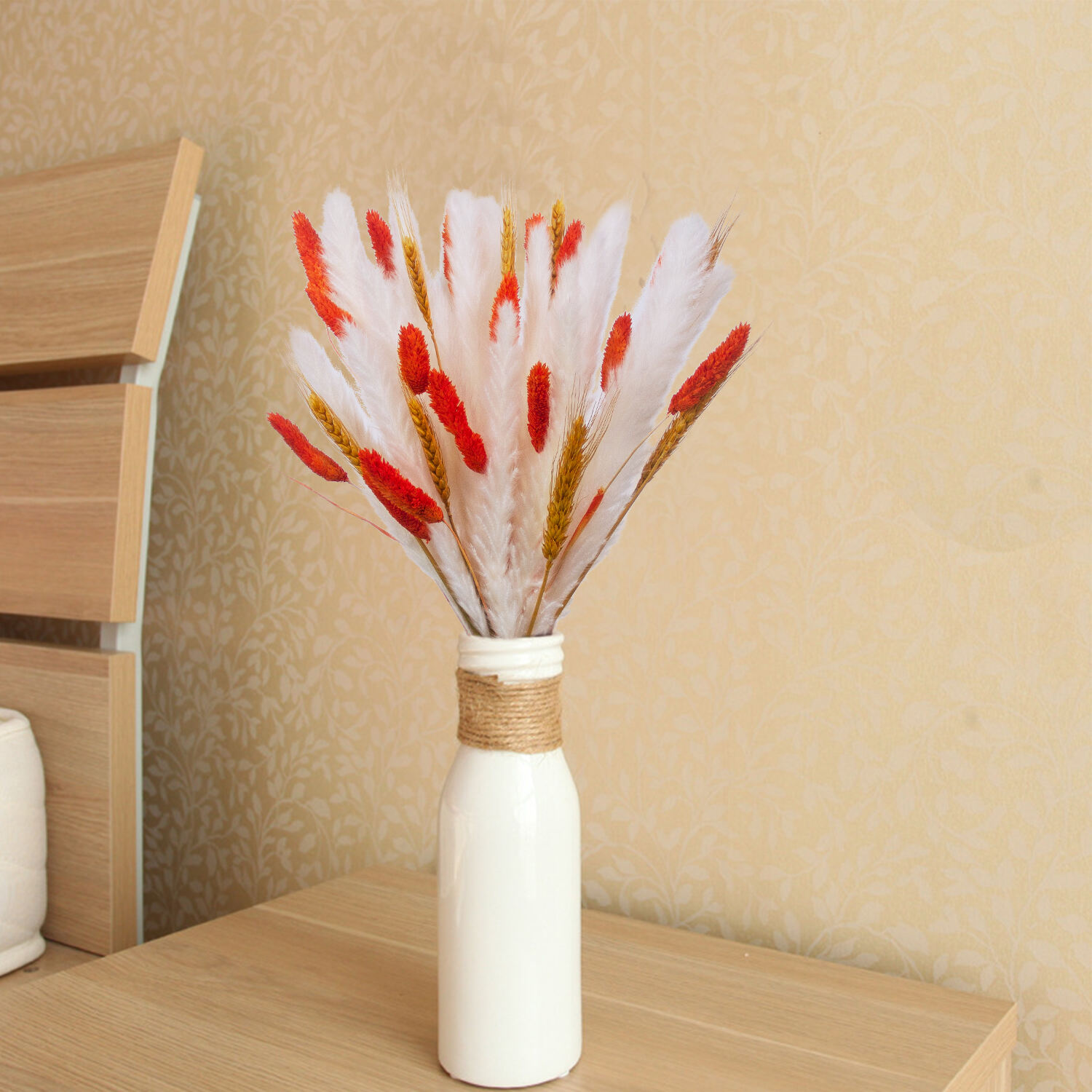
Explore our extensive selection of dried flowers wholesale including pampas grass and preserved roses Our preserved flowers are perfect for creating stunning arrangements that last beautifully in any setting
Preserved flowers have revolutionized the floral retail industry by offering lasting beauty without the maintenance demands of fresh blooms. These carefully treated botanicals maintain their natural appearance and soft texture for months or even years, making them increasingly popular among consumers seeking long-term decorative solutions. For retailers, understanding proper preserved flower maintenance is crucial to ensure products remain attractive and saleable while on display.
The preserved flower market has experienced significant growth, with retailers worldwide incorporating these elegant alternatives into their product lines. However, maintaining their pristine condition requires specific knowledge and careful handling. This comprehensive guide explores the essential practices retailers must implement to keep their preserved flower inventory in optimal condition.
Maintaining appropriate temperature conditions is fundamental for preserved flower longevity. The ideal temperature range falls between 15-25°C (59-77°F). Extreme temperatures can compromise the preservation treatment and affect the flowers' appearance. Retailers should install reliable climate control systems and regularly monitor display area temperatures.
Heat sources like direct sunlight, spotlights, or nearby heating vents can cause preserved flowers to become brittle or fade. Strategic placement of displays away from these elements helps maintain product quality. Consider using LED lighting, which generates minimal heat while effectively showcasing the products.
Preserved flowers perform best in environments with relative humidity between 40-60%. Excessive moisture can reactivate the preservation chemicals, while very dry conditions may cause brittleness. Installing humidity monitors and maintaining proper ventilation helps achieve this balance.
In areas with fluctuating humidity levels, retailers can employ dehumidifiers or humidifiers as needed. Display cases with controlled environments offer additional protection for high-value preserved flower arrangements.
Strategic product placement plays a vital role in preserved flower maintenance. Position displays away from high-traffic areas where products might experience frequent touching or bumping. Create dedicated spaces that allow customers to appreciate the beauty while minimizing physical contact.
Consider using elevated platforms or tiered displays to protect products from dust accumulation. Implementing proper spacing between items prevents friction damage and allows for easy cleaning and maintenance of the display area.
Glass or acrylic display cases offer excellent protection while maintaining visibility. These enclosures shield preserved flowers from dust, accidental touching, and environmental fluctuations. Select cases with proper ventilation to prevent moisture buildup.
For open displays, implement subtle barriers or visual cues that guide customers to admire products without handling them. Clear signage explaining the delicate nature of preserved flowers helps educate customers about proper interaction with the products.
Develop a consistent cleaning schedule to maintain the appearance of preserved flower displays. Use soft, dry cleaning tools like compressed air or feather dusters to remove dust without damaging the delicate blooms. Never use water or cleaning solutions directly on preserved flowers.
Implement dust prevention strategies such as regular air filtration system maintenance and proper sealing of windows and doors. These preventive measures reduce the frequency of required cleaning and protect product quality.
Regular inspection of preserved flower inventory helps identify items requiring attention or replacement. Establish a systematic rotation schedule to ensure all products receive equal exposure while maintaining fresh-looking displays.
Document product conditions and track any changes or deterioration patterns. This information helps optimize display conditions and inform future inventory decisions.
Comprehensive staff training ensures proper handling of preserved flower products. Develop clear protocols for product arrangement, cleaning, and customer assistance. Emphasize the importance of gentle handling and immediate reporting of any product concerns.
Regular refresher sessions keep staff updated on best practices and new maintenance techniques. Include hands-on training for specific tasks like dusting and display arrangement.
Educate customers about preserved flower care through informative packaging, care cards, and knowledgeable staff assistance. Clear communication about product features and maintenance requirements leads to satisfied customers and fewer returns.
Provide specific guidelines for handling, cleaning, and displaying preserved flowers at home. This information helps customers maintain their purchases and builds trust in your products.
When properly maintained in controlled retail environments, preserved flowers can maintain their appearance for 1-3 years. However, optimal conditions and careful handling are essential for achieving maximum longevity.
While preserved flowers are more durable than fresh flowers, minimal handling is recommended to maintain their quality. Retailers should encourage customers to appreciate the visual beauty without excessive touching or manipulation of the products.
Damaged preserved flowers should be removed from display immediately. Unlike fresh flowers, preserved products cannot be restored once damaged. Maintain adequate stock rotation and implement proper handling procedures to minimize product loss.